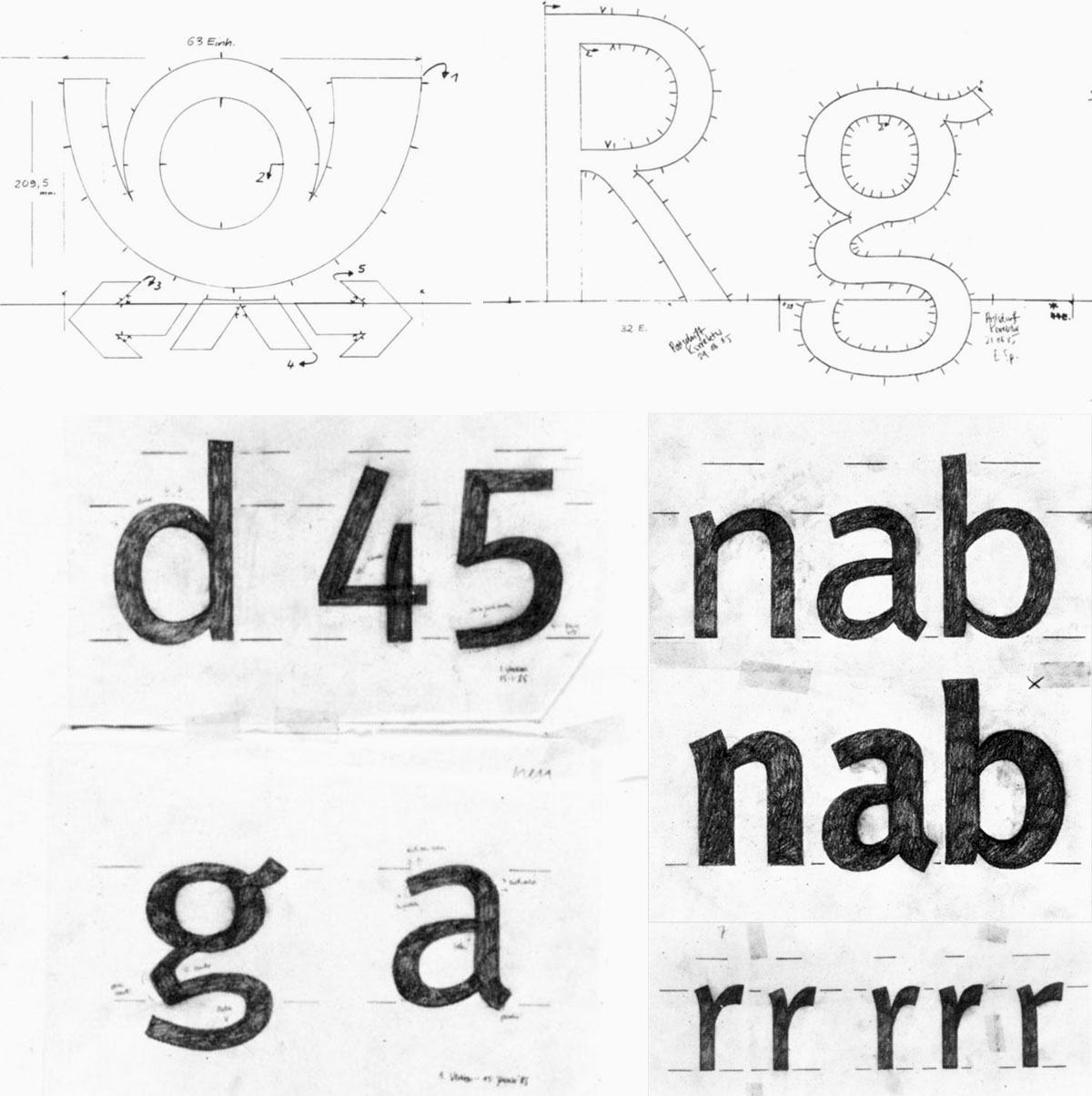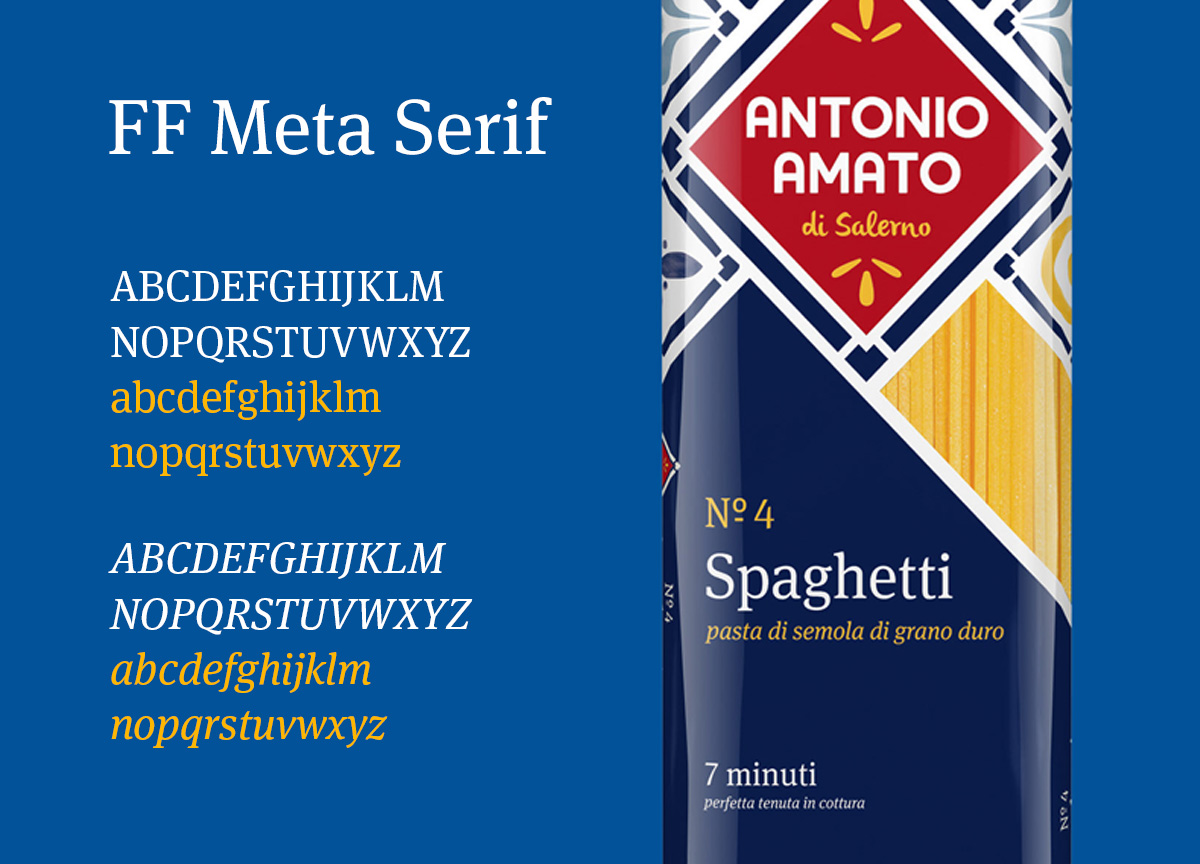France
Paris
Switch to your local agency
Back to menu
Welcome to
There are works that are considered untouchable, considered icons of the art to which they belong. Imagine Leonardo da Vinci’s Mona Lisa or Beethoven’s Ninth Symphony. Yet, every now and then, there is someone who goes against the trend, criticizing or even mocking what is unanimously considered a masterpiece. If, in the Art world, it was Marcel Duchamp who drew the moustache on the Mona Lisa, then on the typographic side, it was Erik Spiekermann who distanced himself from the symbol of modern typography: Helvetica.
It happened between the 80s and 90s. Erik Spiekermann, a German designer and typographer, claimed that Helvetica was boring and bland. A true heresy for the many supporters of the Swiss typeface, which, however, did not undermine Spiekermann’s idea. The German designer believed it was time for a change in the world of typography and decided to work on a font that would be, in his own words, the “complete antithesis of Helvetica”.

The opportunity arose for a work commissioned by the Deutsche Bundespost, the post office in West Germany, which in 1985 asked him to create a proprietary font. The project was interesting, but at the same time very difficult. The font needed to be extremely legible and easy to apply, both on large supports, such as moving vehicles, and on very small spaces, such as postage stamps. Moreover, it would potentially be printed quickly on cheap paper, with irregularities and poor ink yield.

Spiekermann got to work materializing his typographic vision: combining the grace of calligraphic letters with the functionality of linear characters. The optimization of space led him to minimize the ascenders and descendants, with a rather compact design of the letters. The humanist font designed by Spiekermann, initially called PT55, allowed you to write a lot of text in a small space, in a clear, elegant and distinctive way.

Unlike Helvetica, the PT55 left no room for ambiguity between letters or numbers. The three alphanumeric characters, “1Il,” are emblematic, which could often lead to confusion. Spiekermann’s letters and numbers, on the other hand, maintained a clear distinction.

Unfortunately, the project did not go through with the Deutsche Bundespost, but Spiekermann was convinced of the potential of his character. He continued to work on it, independently, improving and expanding it, to include more weights and styles. He decided to call it Meta, taking a cue from his own design studio, MetaDesign, founded in Berlin a few years earlier. In 1991, the font was released by the newly created FontFont library with the full name FF Meta. Success was immediate and crossed national borders.

The clean, cheerful and distinctive aesthetic, combined with the ability to be used in various contexts, made it one of the most used fonts in the 90s. From Herman Miller, an office furniture company to The Weather Channel, passing through Endemol, Mozilla, Imperial College London and Fort Wayne International Airport, just to name a few of the brands that have adopted the Meta over the years.
Spiekermann himself used it as a guide font for his FontBook, a collection of all the main typefaces on the market, considered by many to be the Bible of fonts.


The growing popularity pushed its author to work on it again, expanding its weights and developing a character set that covers 110 different languages. This allowed Meta Greek, the Greek variant of Meta, to be adopted as an official character by the Greek government, in 2010.
Today Meta has become a super family of fonts, which includes, among others, the Meta Serif, a version with serifs of the original font. Also in this case, the extreme legibility is the master, restoring a clear and elegant font, also used in the design of the visual identity of Antonio Amato.

The success of the Meta significantly contributed to Spiekermann’s fame, who today is considered one of the most authoritative figures in the field of typography. His creation was also selected by the MOMA in New York, which included it among the 23 most representative fonts of the digital age. Yet, despite the many awards, the most common appellation attributed to Meta is “the Helvetica of the 90s“, a compliment that probably does not sound like such, for its creator.
Giuseppe Mascia, Visual Design Lead
Subscribe and receive CBA’s latest news directly in your inbox!
Privacy Overview
| Cookie | Duration | Description |
|---|---|---|
| cookielawinfo-checbox-analytics | 11 months | This cookie is set by GDPR Cookie Consent plugin. The cookie is used to store the user consent for the cookies in the category "Analytics". |
| cookielawinfo-checbox-functional | 11 months | The cookie is set by GDPR cookie consent to record the user consent for the cookies in the category "Functional". |
| cookielawinfo-checbox-others | 11 months | This cookie is set by GDPR Cookie Consent plugin. The cookie is used to store the user consent for the cookies in the category "Other. |
| cookielawinfo-checkbox-advertisement | 1 year | The cookie is set by GDPR cookie consent to record the user consent for the cookies in the category "Advertisement". |
| cookielawinfo-checkbox-necessary | 11 months | This cookie is set by GDPR Cookie Consent plugin. The cookies is used to store the user consent for the cookies in the category "Necessary". |
| cookielawinfo-checkbox-performance | 11 months | This cookie is set by GDPR Cookie Consent plugin. The cookie is used to store the user consent for the cookies in the category "Performance". |
| viewed_cookie_policy | 11 months | The cookie is set by the GDPR Cookie Consent plugin and is used to store whether or not user has consented to the use of cookies. It does not store any personal data. |
| Cookie | Duration | Description |
|---|---|---|
| aka_debug | This cookie is set by the provider Vimeo.This cookie is essential for the website to play video functionality. The cookie collects statistical information like how many times the video is displayed and what settings are used for playback. | |
| player | 1 year | This cookie is used by Vimeo. This cookie is used to save the user's preferences when playing embedded videos from Vimeo. |
| pll_language | 1 year | This cookie is set by Polylang plugin for WordPress powered websites. The cookie stores the language code of the last browsed page. |
| Cookie | Duration | Description |
|---|---|---|
| _gat | 1 minute | This cookies is installed by Google Universal Analytics to throttle the request rate to limit the colllection of data on high traffic sites. |
| YSC | session | This cookies is set by Youtube and is used to track the views of embedded videos. |
| Cookie | Duration | Description |
|---|---|---|
| _ga | 2 years | This cookie is installed by Google Analytics. The cookie is used to calculate visitor, session, campaign data and keep track of site usage for the site's analytics report. The cookies store information anonymously and assign a randomly generated number to identify unique visitors. |
| _gid | 1 day | This cookie is installed by Google Analytics. The cookie is used to store information of how visitors use a website and helps in creating an analytics report of how the website is doing. The data collected including the number visitors, the source where they have come from, and the pages visted in an anonymous form. |
| vuid | 1 years | This domain of this cookie is owned by Vimeo. This cookie is used by vimeo to collect tracking information. It sets a unique ID to embed videos to the website. |
| Cookie | Duration | Description |
|---|---|---|
| IDE | 1 year 24 days | Used by Google DoubleClick and stores information about how the user uses the website and any other advertisement before visiting the website. This is used to present users with ads that are relevant to them according to the user profile. |
| test_cookie | 15 minutes | This cookie is set by doubleclick.net. The purpose of the cookie is to determine if the user's browser supports cookies. |
| VISITOR_INFO1_LIVE | 5 months 27 days | This cookie is set by Youtube. Used to track the information of the embedded YouTube videos on a website. |
| Cookie | Duration | Description |
|---|---|---|
| CONSENT | 3 years | No description |